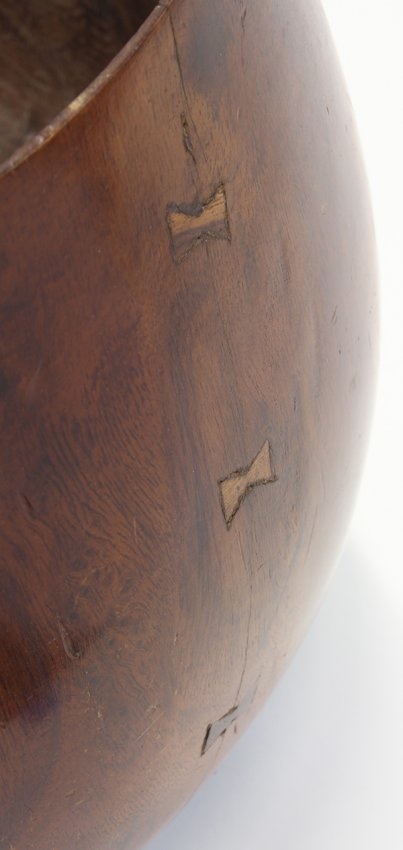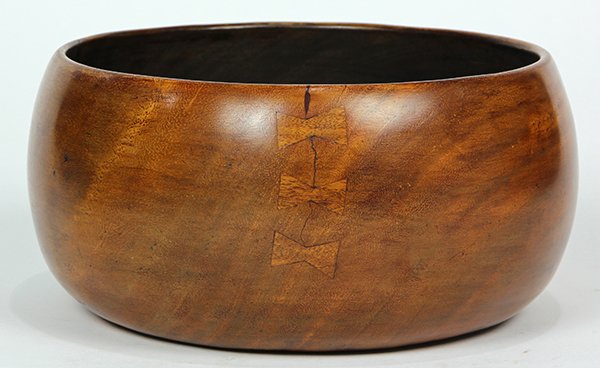Carved and turned wood bowls: Collectible across cultures and ages
Fine handcrafted wood bowls have been collected across the centuries. One of the most appealing forms is the Hawaiian koa wood poi bowl, or calabash. Poi, an important staple food from the taro plant, was considered a sacred part of daily life in Hawaiian culture. As a result, large serving bowls were finely carved, to be enjoyed by chiefs and during feasts. These feast or storage bowls were typically crafted in koa wood, a softwood that is easily shaped and carved. They were also polished and oiled, not only giving the bowls a rich patina but also protecting the vessels from the elements. It is clear that carving a koa wood poi bowl was a time consuming and venerated task, as evidenced not only by the quality of carving, but also by the later indigenous repairs that can be found on examples that have been collected across generations.

Monumental and important Hawaiian koa wood poi bowl (calabash), 18th century, realized $24,200 in November 2014 at Clars Auction Gallery, 14”h x 16”dia.
So what makes some Hawaiian koa wood poi bowls more collectible than others?
There are certain attributes to look for on koa wood poi bowls that often command higher values at auction.The first trait is age. While not always the rule, generally bowls from the 18th century can be more desirable than those from the 19th century.

Another aesthetic value of the vessels is the quality of the wood itself. Bowls that are highly figured can command a higher value than those that have a more simple grain.
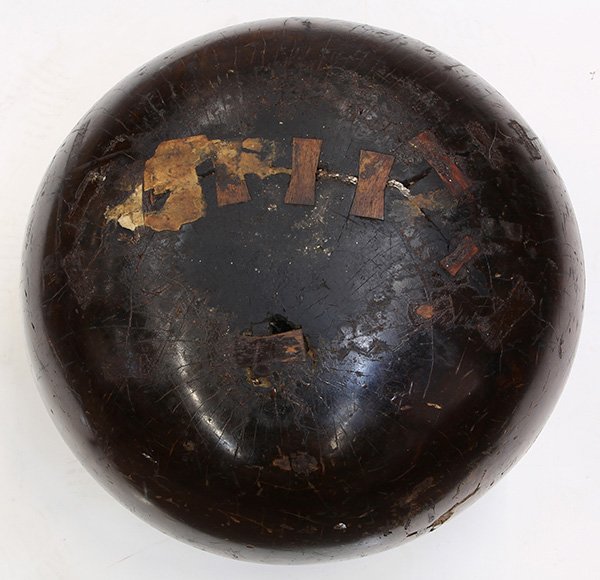
As the base is of the vessel often receives the greatest use and contact, the interior often has evidence of lower repairs.
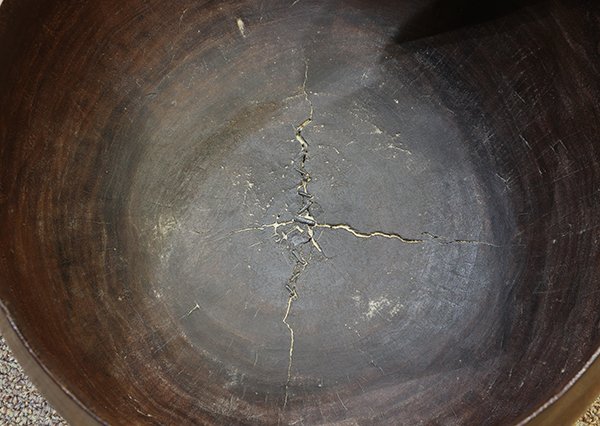
Another item that contributes to the value is an original rich patina. It is important that early Hawaiian wood bowls retain a rich mellow patina and exhibit evidence of use and early repairs.
Bowls that have a tall and thinly hollowed form can command a higher value than shorter bowls that have thicker walls. Check out this Antiques Roadshow video that discusses the auction value of poi bowls.
Are there more contemporary examples that are popular today?
Wood turned bowls are currently in demand. A variety of American studio artists are working in this form.
Modern wood turned bowls that are more desirable share some commonalities with earlier Hawaiian koa wood poi bowls. One attribute is utilizing a highly figured wood. Another is a thin shaped rim.
When determining the value of Modern wood turned bowls, there are several major differences from Hawaiian examples. The condition of wood turned bowls is incredibly important. While early Hawaiian bowls are valued for exhibiting signs of age and use, Modern bowls, on the other hand, are prized for their mint condition.
The largest distinction of all is that, similar to other Modern artworks, it is important that the artist who has turned the bowl is a noted artist who has strong auction records. While Hawaiian koa wood bowls are generally unsigned many Modern wood turned bowls are signed by the particular artist that has crafted them. An example of a well-known artist that recently surfaced at Clars Auction Gallery was Philip Moulthrop (b. 1947). The vessel was a wood turned bowl executed in leopard maple. Another noted artist is Bob Stocksdale.
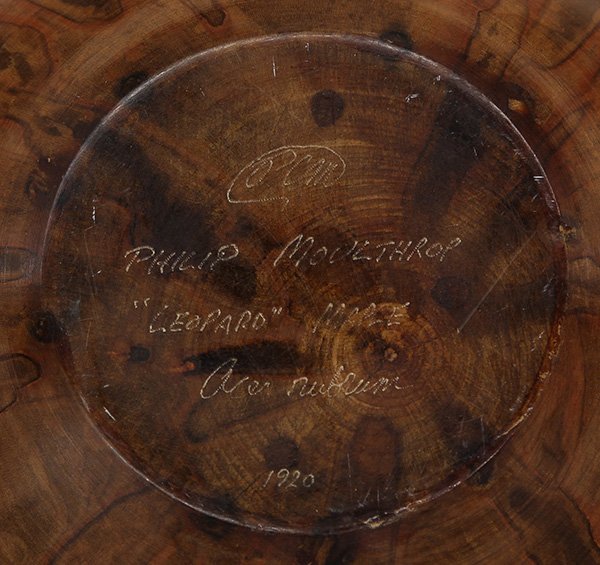
Philip Moulthrop signature
It is important to have properly evaluated by an auction specialist at a reputable gallery when determining the possible worth of wood turned bowls, as some artists command higher estimates than others, and some artists, despite the quality of execution, have little or no auction records. This lack of sales records could result in conservative estimates when compared with noted artists that have strong associated values.
But, always remember if a piece is unsigned this, of course, does not mean that the vessel is lacking value. Quality of wood and fineness of execution are also important factors. It is also advisable to have pieces reviewed by a knowledgeable specialist in the field.
